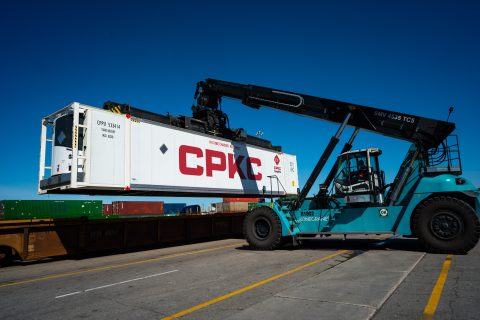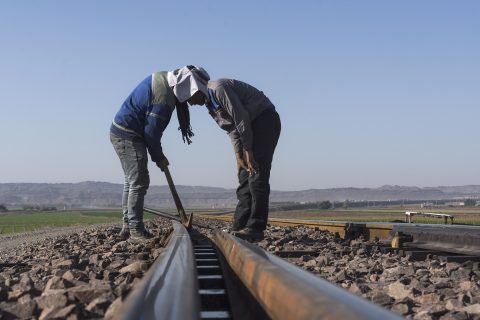UTLC ERA tests new China-Europe corridor

UTLC ERA has carried out a test container train trip from China to Europe in cooperation with Belintertrans-Germany (BIT-Germany) and CFTS Liski. The freight train composed of fifty 40-foot containers departed from Chongqing on 8 December and arrived at Slavkov station in Poland sixteen days later, on 24 December.
BIT-Germany initiated the operation, and UTLC ERA undertook the service through Kazakhstan, Russia and Belarus. Most importantly, the new service entered Europe through an alternative border-crossing station, that of Goryn / Udritsk at the Belarussian-Ukrainian borders. Subsequently, the new route will also pass through Ukraine before reaching Slavkov.
Route characteristics
As mention above, the route’s transit time from Chongqing to Slavkov was sixteen days, which is considerably fast. The cooperation between BIT-Germany and CFTS Liski to avoid the reloading of containers from broad to narrow gauge between Ukraine and Poland contributes notably to short travelling times.
The transfer to broad gauge took place at the Altynkol / Dostyk border-crossing in Kazakhstan. From there, the train needed seven more days to arrive in Slavkov.
Expectations
Expectations show that the launching of this alternative route through Goryn will contribute greatly to Eurasian transportation. First of all, it will provide faster transit times which is a critical prerequisite for high-quality services, especially when transferring sensitive products.
Secondly, it will unload other European border-crossings from the majority of Eurasian traffic’s weight. In practice, this would mean less congestion and more efficiency. After all, as Alexey Grom, CEO of UTLC ERA, mentioned, “our main technological efforts focus on reducing transit times. Engaging new border-crossings as well as diversifying increasing cargo flows are among the possible solutions”. Such developments could also conduce to providing “the necessary safety for future growth in traffic volumes of the China-Europe route and the improvement of UTLC ERA’s services”, he concluded.
Continuity
Earlier in December UTLC ERA announced that it reached its milestone of half-a-million TEUs for 2020. The volumes that are one and a half times higher than 2019 indicate the company’s determination to provide efficient and frequent Eurasian freight services. Additionally, they prove that rail is acquiring a stable position in intercontinental transportation.
Following the example of 2020 UTLC ERA seems keen to continue operating on the same levels while exploring new possibilities to optimise connections and resolve existing infrastructural issues.
You just read one of our premium articles free of charge
Want full access? Take advantage of our exclusive offer




